I’m going to tell you about 10 books that changed my life, which is tricky for me, right now. Most of the books that changed my life are not currently in my possession. My library is in storage in the United States, the last 1000 books I could not bear to part with when we moved to New Zealand, so the interesting part of this exercise is — I have to see what really sticks.
In selecting my top 10, I want to scan my eyes lovingly over my bookshelves, to make sure that I can pick the ones that matter the most to me. But without my books here, I have to rely on memory and impact to make my choices — which is, I suppose, a more authentic method of selecting the books that mattered most.
The exception to this rule is the first book:
1 — Aesop’s Fables

I found this book here, in New Zealand, and it instantly gave me flashbacks. This is the edition I had when I was a young boy, and although that particular book is long gone, I found this version — from the same printing run, with the same pictures I remember from my early childhood — in a secondhand shop across the world. Although it was printed by Eurobook in 1975, making it a typical book to be traded around the Commonwealth, somehow one of these editions found its way to the east coast of the United States when I was a boy, and I read this book repeatedly.
The pictures remind me of many nights lying in bed as a child, re-reading the stories that would make me into a better person. There was comfort in reading fables with a goal, knowing that every passage ended with a moral, and by re-reading these stories I could imbue this morality into my soul.
This was the first whetstone against which I sharpened my character.
Years later, across the world, I found this book again, with the same pictures that I gazed over as a child, and it unearthed long-buried memories that are difficult for me to access.
I do not have many memories of my childhood. There is nobody I know in my life who I met before the age of fourteen. Without ongoing relationships to share and relive the stories of my youth, most of my childhood has become forgotten.
Finding this book gave me a rare glimpse into who I was as a boy, and reminded me of moments I had lost, memories buried under the trauma and fear of my teenage years. Underneath those layers of repression there is a deep history of many long hours spent reading this book, using these stories to educate myself on right and wrong.
We found a different edition in Costa Rica, also with beautiful pictures (and a better translation), and it has become careworn and shabby as I’ve read these stories to my children countless times, passing on the path to virtues as I found it, so that they can guide their lives by the same stories that helped turn me into who I am.
This edition, though, with its faulty translation and 70s illustrations, is a rare relic of my childhood that symbolizes the foundation of my character.
2 — The Interlinear KJV New Testament
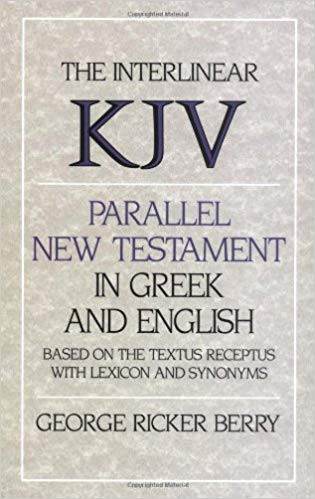
Most people don’t know this about me, but I was a devout Christian for a number of years. Once upon a time, I cited chapter and verse as the foundation of whatever idea I was presenting. I was raised in the Methodist church, went through Confirmation and various other rituals to prove the depth of my faith, and shortly after I started looking at which seminary I was going to attend, I left the church.
My interests in Christianity were keeping me away from God.
See, what fascinated me was how Christianity affected history. How the Inquisition changed the possibilities of nations, how the decisions made at the Council of Nicaea rippled into different heresies and denominations, and how the (mis)translations of select passages of the Good Book resulted in old heresies accepted as dogma, and provided pretext for the eradication of competing sects.
This scholarly research into the effects of the church upon Western European history, it fascinated me. And it blinded me to any direct relationship with the divine.
Shortly after I completed my first exegesis, an examination of the differing translations of the Book of Revelation, I found this amazing book. The Interlinear King James Bible allowed me to flip through the Gospels of the New Testament, with alternating rows of language for the same line of text — one line in Ancient Greek, and one line in English, with the KJV chapter in the margin for reference.
This allowed me to unpeel the modern translation of the Bible, and look into its naked source — or, at least, one of the least recent sources. Since I couldn’t read Coptic or Aramaic, I never made it all the way back to the source documents of the Holy Book, and I’m glad I never did, because I don’t know if I ever would have gotten out of that labyrinthine maze of linguistics.
While I was leafing through this book, looking for evidence of another heresy attributable to a fault of translation, I realized that my behaviour was the absolute opposite of the monk. I was not directing my mental faculties to understanding God, and instead I was completely and overwhelmingly preoccupied with what Man had done with him.
That was when I saw my way out of this tangled maze — I had to look for God elsewhere, because I had learned too much here, and I would be unable to see the deity through the fascinating history of Christianity. The very depth of my knowledge had blinded me to the divine light of understanding.
Next, I will tell you about a related book that changed my life, and helped me to examine the God of the Bible as an individual character in a story.
3 — God: A Biography by Jack Miles

When I went hitchhiking indefinitely, this was the book I took with me.
It sounds glamorous, that I once lived as a street musician for a year, hitchhiking from one coast of the United States to the other — but the truth is, I was often alone, and tired, and aimless. It was the perfect time to apply myself to the problem of the God of the Bible.
God, as Pulitzer prize winner Jack Miles writes, is a character in the Bible. He is, arguably, the most important character — with Jesus as the obvious hero of the New Testament. In the Old Testament, however, God is undoubtedly the protagonist of the story.
Looking at this character, from Genesis through Malachi, he obviously changed. The God of the Pentateuch is not the same as the God of later books. He is *changed* by things that happen, and even evolves his behaviour over time.
If God is an eternal, unchanging entity, this is impossible — but as any student of stories can tell, God does change as he progresses through this story. Throughout my life, I’ve read the Bible cover-to-cover three times, with plenty of additional readings of my favourite books. I knew this character, and I knew he changed, and here was an author devoting an entire book to exploring why.
Jack Miles was the first author who gave a thorough investigation into the consequences of those changes, and provides a book-by-book examination of the evolutions of his character.
There were many nights when I slept outside, often on church grounds, hidden by a corner of an empty congregation off the interstate, wondering why God’s house was so empty, and why his character had changed so much, in direct contradiction of the nature of the eternal.
The conclusion that I reached on that trip was: the God of the Bible is not the God of Creation.
The ultimate deity, the eternal power that is behind all things, he would not be so petty as to torture Job to win a wager; he would not destroy the world with a flood and feel contrition. The true God must have been, I reasoned, a deity higher than the God of the Bible, Jehovah, who was the petty, vindictive Spirit that begat himself as a son.
It was a number of years before I found the justification for this reasoning in a school of philosophy, and I will tell you about that book next.
4 — Theological-Political Treatise by Baruch Spinoza
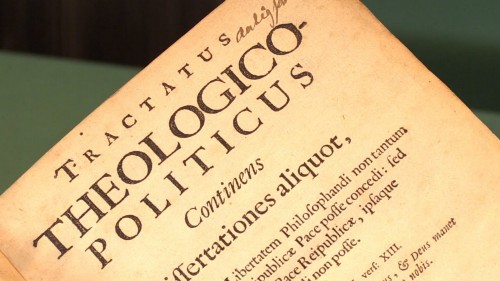
I would not call Spinoza my favourite philosopher, but I owe the Dutchman eternal thanks for accomplishing what nobody else could: he rationally proved the existence of God.
In all my readings across the corpus, I had never found anyone else who could accomplish this, and until I read Spinoza, this gave me great cause for doubt. If there really was an eternal being that sits under the mantle of God, I reasoned, there must be a method of proving its presence through logic alone. Cartesian philosophy should be sufficient to translate the evidence of our senses and our experiences into a theorem that would prove that God existed; otherwise, it would not truly be a part of our world, if we are functionally so blind to it.
We are a part of this world, made in God’s image, so it logically follows we must be able to sense and perceive and identify a being that is within literally everything around us.
Dante’s workaround never worked for me. The first two cantos of the Divine Comedy led his protagonist through the Inferno and Purgatorio, and he was guided through these realms by Virgil, the personification of Reason itself. When Dante reached Paradiso, in a flash of light Virgil disappeared, and was replaced by his new guide, Beatrice, the personification of Faith.
The message here, as in so many liturgically-derivative texts throughout history, was that God was inaccessible by the faculties of Reason, and it is only by Faith alone that you could know God.
This never sat well with me, and it didn’t sit well with Spinoza, either.
He published the Tractatus Theologico-Politicus anonymously, and his publisher changed the city and the name of the printing house to protect themselves from retribution by the Church. This treatise was highly critical of the Church’s stance on a number of issues, and approached the idea of the Deity from a philosophical standpoint, discarding dogma that could not be proven by reason alone.
‘Except God, no substance can be or be conceived,’ is as much a rational point as a theological one. If one takes the premise that God does exist, then it must be in everything, and everywhere, for that is the definition of omnipresence. Spinoza then goes deeply into the ideas of substance and attributes, thought and extension, to harmonize the intellect of Man as a lower version of the intellect of God.
By understanding one, we can glean insights into the other.
Spinoza’s Tractacus then used reason *alone* to arrive at the conclusion that God and Nature were one and the same thing, that the Universe around us (in its entirety) was the emanation of God, and the consciousness of God was present in every part of it, because that divine consciousness can be found within the essence of every monad.
When Albert Einstein was asked by a rabbi if he believed in God, he replied, “I believe in Spinoza’s God, who reveals himself in the orderly harmony of what exists, not in a God who concerns himself with fates and actions of human beings.”
This was the God I had been searching for, the power and consciousness behind all things. When I became rationally convinced of its existence, I was free to discover the most direct path into its divine embrace.
I will tell you about the path I followed next, and the book that led me there.
5 — The Mystical Qabalah by Dion Fortune
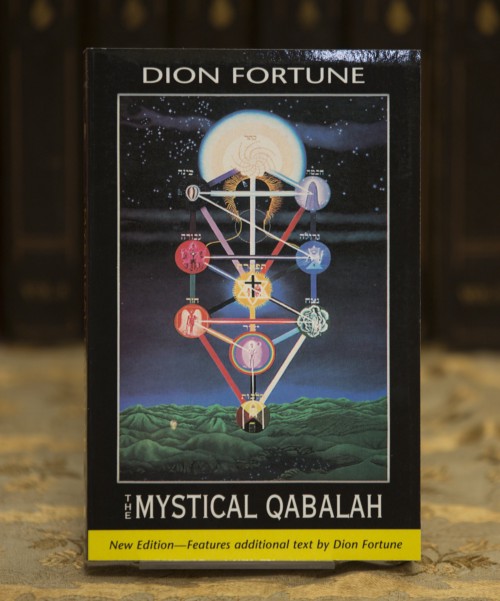
While I have gained many insights from my wide library of esoteric lore, this book is special. If I could be said to have a Holy Book, it is this one — not because it contains passages of prophecy or of moral guidance, as most other religious texts do, but because this book provided me with a practical method to access the consciousness of divinity.
There are a number of honorable mentions that guided me closer to this level of illumination, including the Discourses of Epictetus and The Essential Plotinus, but none of them provided the detailed, level-by-level understanding of the cosmos, with descriptions of the spiritual energies that are contained and stored at each level — and instructions on how to access them.
“Symbols are to the mind what tools are to the hand — an extended application of its powers,” the mystic Dion Fortune wrote. Her book provided me with practical tools I was able to use to extend my mind into higher levels of consciousness, and meet with beings and energies that are difficult for mortals to see or to sense.
The entire system of Qabalah, developed 3000 years ago by mystical Jewish rabbis, is centered upon a glyph known as the Tree of Life. You can see this symbol on the cover of the book — it is a remarkably complicated symbol, containing 10 ‘sephirah,’ and the 22 paths between them.
Each ‘sephiroth’ (singular) represents a level of consciousness, or reality. The lowest level, Malkuth, is the physical, mundane, everyday world in which we move our bodies and manipulate matter. One level up is Yod, the realm of imagination, where you are interacting with these ideas as I am describing them to you. We simultaneously exist within a number of these different levels, and there is a dividing line between where we exist, and the Three Supernals at the top of the Tree, and this line is known as the Abyss.
Beyond the Abyss is the Godhead, the Holy Trinity, the three perfect aspects of the Deity, where the mind of man cannot go. By understanding the levels below it, however, you can glean insights about what is above. You can also use the Tree of Life to understand the deeper and more mystical aspects of Christianity, because the Jewish mystics who developed the Kabbalah were the forefathers of the mystics who meditated upon the deeper spiritual questions contained in the Christian Bible. The history of Christian thought was guided by the unseen hand of the Jewish Kabbalah, which made it such an easy transition for my own development of mystical awareness to access.
What really wedded me to this book, though, was when I realized that any theological system could be laid upon the Tree of Life, and it would still work cohesively. The Greek pantheon fits nicely upon the lower 7 sephira. The Three Tan Tiens of Taoism correlate to the three triads above Malkuth. As Dion Fortune wrote, in her elegantly complicated language, “Each symbol, moreover, admits of interpretation upon the different planes, and through its astrological associations can be related to the gods of any pantheon, thus opening up vast new fields of implication in which the mind ranges endlessly, symbol leading on to symbol in an unbroken chain of associations; symbol confirming symbol as the many-branching threads gather themselves together into a synthetic glyph once more, and each symbol capable of interpretation in terms of whatever plane the mind may be functioning upon.”
This beautiful complication of ideas was perfect for occupying all the branches of my mortal conscious mind, keeping me mentally engaged to my maximum capacity, and freeing my spirit to engage with these mystical ideas and sense for itself what felt like home.
Studying the Qabalah has been endlessly rewarding. Out of all the books that I am sharing with you, this one is by far my favourite.
6 — 101 Power Thoughts by Louise Hay
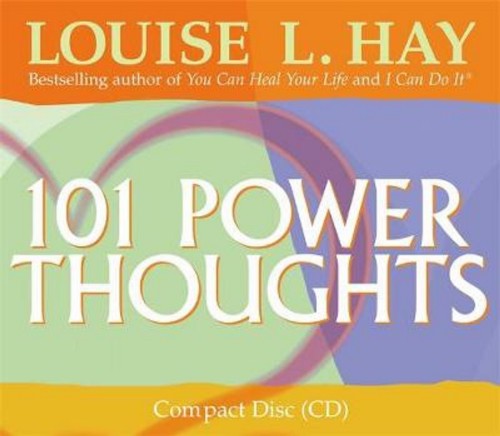
This is not technically a book, it is an hour-long audio recording, but it has had a more profound effect upon my default mental state than any book I have ever read.
While she lived, Louise Hay was one of the single most positive influences on the world. Her work in the field of positive thinking is legendary, and this short recording was a distillation of the most practical and effective affirmations she knew.
By listening to this one-hour audio track, I successfully reprogrammed my subconscious mind. There is no way I could count how often I have played this through my headphones as I walk, on my computer as I work, or by my nightstand on repeat as I sleep.
I can confidently say that I never would have found emotional serenity in my life without a practical method such as this, listening to affirmations regularly, and I love the way this recording makes me feel.
My younger mind was full of anger and conflict, and it was soothed by her gentle, motherly voice reciting powerful and uplifting thoughts in the first person. Listening to this recording allowed me to think these powerful thoughts, as often as I pressed play.
By thinking these thoughts, and feeling these feelings, I was able to turn away from the angry dominant mindset I possessed when I was younger, and replace it with a default mindset of calmness and love.
At the time of publication of this article, this marvelous recording is available as a free download, by signing up for the Hay House newsletter. If you have any interest in upgrading or improving your mindset, this is a practical method that changed my life.
7 — Tools of Titans by Tim Ferriss
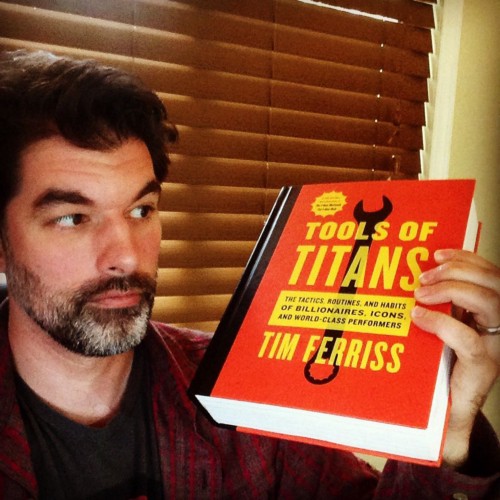
When I moved to New Zealand, I took only one book, and it was this one.
While I do have a complicated and skeptical view of most of Tim Ferriss’ work, his obsessive note-taking in the field of personal development is unparalleled. Over years of interviewing titans in their fields on The Tim Ferriss Show, his excessively popular podcast, he took notes of the best-of-the-best in every interview. Then he turned those notes into this book.
Podcasts are not easy for me to consume; I work from home, and I do not have a commute. My kids are loud. Reading is a much easier medium for me to consume lots of information. Having a digest of the best portions of every interview in print form, allowing me to flip through the best and most useful practical guidance from hundreds of his guests, ranging from Arnold Schwarzenegger to Douglas Adams, from Derek Sivers to Ramit Sethi, has given me all the benefits of listening to his corpus of podcast interviews without having to devote hours to a medium I don’t like.
During my first two months in New Zealand, I was by myself, while my family waited in the United States for me to secure a job offer (and a visa) that would allow them to come and join me indefinitely. During this time, I worked ferociously on my business, saving money for the upcoming trip and immigration costs. Waking at 3am every day, to stay on Pacific time with my clients, I required a regular sharpening of my saw.
This book gave me a plethora of exercises and practices to keep my mindset sharp, my body toned, and my work productive. If there was one book I had to give to a young boy to guide his growth into manhood, it would be this book.
8 — The Greatest Salesman In The World by Og Mandino
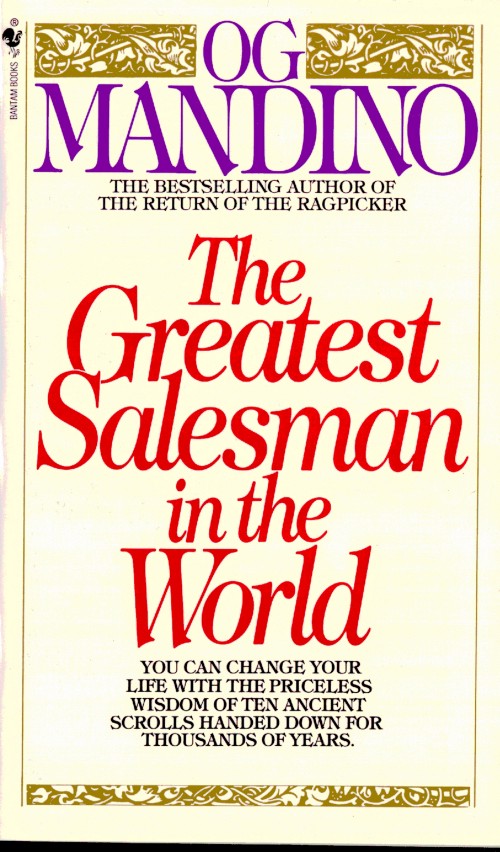
When I was learning how to sell professionally, this book helped me to level up.
Other books have helped me to learn the techniques and the craft of selling, and I’ll tell you about one of those next. First, though, I’m going to tell you about the book that taught me about the art of selling.
When I first flipped through this book, I was disdainful. I thought it was corny. It seemed simplistic, and as someone who loves complicated ideas and complex solutions, I avoided the simple.
After my first year selling insurance, I wasn’t able to progress, because I neglected the simple lessons taught in this slim little book.
This book sat on the bookshelf in my cubicle, where I would study during lunchtime, and I came across a quote in a different book that finally convinced me to give it a try. I don’t remember who wrote it, or how they said it, but the gist of it was, “If it’s corny, that probably means it works.”
So I opened The Greatest Salesman In The World, a parable about a salesman in ancient times who was gifted with ten scrolls of wisdom, and wastold to read one scroll aloud, three times a day, for thirty days before moving on to the next scroll.
The subject of each short scroll was as follows:
- I will Form Good Habits and Become their Slave
- Greet Each Day With Love In Your Heart
- I Will Persist Until I Succeed
- I am Nature’s Greatest Miracle
- Live Each Day as if it Were Your Last
- Master Your Emotions
- The Power of Laughter
- Multiply Your Value Every Day
- All is Worthless Without Action
- Pray to God for Guidance
I was only just beginning to learn about the power of affirmations, and the Reticular Activating System. I decided to follow the program outlined in this book, and it changed my life.
I kept my worn and battered copy in my glove compartment, because I drove a lot during that job. Every time I entered my car, morning, noon, and night, before starting it up, I would read one of the Scrolls out loud, in five minutes of echoing privacy.
It took ten months, and the change in my emotional state was reflected in a corresponding change in my results. I no longer showed up to sell something, I showed up to solve a problem my customer was facing. I enjoyed the time as it passed. I showed up with love shining from my heart, and people enjoyed the time they spent with me, apart from the business networking and the trading of referrals. I became a positive salesman.
For months afterwards, I kept the habit of reading Scroll II: Greet Each Day With Love In Your Heart, because I loved the way it made me feel to read it.
This book taught me about the art of selling, and that it is an art that starts and ends with your own emotional state. To master the craft of selling, and to understand the mechanics of sales funnels, I required a different book, and I will tell you about that book next.
9 — The Little Black Book of Connections by Jeffrey Gitomer

If you drop me off in a crowd of strangers with a pocket full of business cards, I am a happy man. The reason I have been able to successfully support my family as an entrepreneur is because of this book.
Jeffrey Gitomer taught me how to sell. Before I worked for one of his companies, as the digital marketing manager for an email marketing platform, I learned from him by reading all of his practical and engaging books on the craft of selling.
Each little book is color-coded, and relates to some aspect of the selling lifestyle; attitude, closing, productivity, and so on. The first book of his that I read was the Little Black Book of Connections.
I was selling insurance at the time, my first grown-up corporate job. After a number of bad gigs selling door-to-door, selling MLM schemes, selling in phone banks and boiler rooms, this was my first professional sales gig.
I wore a tie to work every day, I had a child and a wife to support, and a mortgage to pay. I educated myself on the mechanics of selling by reading voraciously, and this is the book that taught me how to network.
Networking with other professionals has given me a wide range of weak ties, a pool in which I can prospect throughout my life, a series of email newsletter lists, and a confidence that I can always sell my way out of a problem if I shake enough hands.
Jeffrey Gitomer’s writing style is bite-sized, digestible, and amusing. Frequently throughout the day, after I had reached a goal of a number of phone calls, or finished some paperwork, I would reach for this book and flip through to read a couple of random pages.
This was what made the book so practical to read and study throughout my day — I didn’t need to trudge through lengthy blocks of text from end to end, I could open randomly and read a story and a cartoon, ponder his big bold quotes, and apply the lesson to something that had *just* happened in my sales career.
Being able to apply my charisma to my income generation was something I had been searching for during the first few years of my career, and reading this book gave me a practical method to make that happen.
10 — The Obstacle Is The Way by Ryan Holiday

“If you want momentum, you’ll have to create it yourself, right now, by getting up and getting started,” says author Ryan Holiday.
This book is a fantastic a collection of Stoic philosophies, punctuated with stories from historical figures applying these principles — however, what I find really amazing is it’s similarity to the philosophy of l’art du déplacement.
In parkour, we do not see an obstacle as an impairment to movement. Indeed, it is the obstacles that make the movements worthwhile.
Seeing obstacles as the stepping-stones of your path gives you confidence and agility in dealing with anything that life places in your way. Using these obstacles to increase your momentum is one of the foundational mental perspectives of traceurs, the practitioners of parkour, and this book highlights historical figures who have used these principles figuratively.
(I talk more about the mental shift of parkour in my YouTube review of this book: https://www.youtube.com/watch?v=bAH_eFI5PR4)
The parkour parallels are great, and the stoic philosophy is wonderful, but neither of those are actually the reason why this book changed my life.
The change happened when I saw the format underlying the structure of the book: every chapter opened with an anecdote.
Each chapter opened with a story hook, drawing me in deeply, and engaging me as I used the story the author just told to understand the philosophical principles underlying a stoic lesson. By using this formula, he was able to describe very abstract principles by pointing to the particulars of his opening anecdote.
After I read this book, I finally understood the power of story hooks, and it dramatically improved my craft as a writer.
So while this is primarily a book of philosophy, which is a core component of my mental makeup, and it has significant parallels to parkour, my favourite sport, ironically, this book changed my life because it made me a better writer.
Books are the staircase to my soul.
Writing these ten book reports on the books that have meant so much to me, the ones that have crafted me into the person I am today, was a wonderful exercise in self-discovery. So, if you’ve read this far, I must apologize that I didn’t write this for you — I wrote it for myself.
If you find some book in this list intriguing, however, I hope that you help yourself to this wisdom that I’ve found to be so useful and life-changing.
If you’d like to see my video book reviews (for all different books), I have a YouTube playlist of my book reviews here.




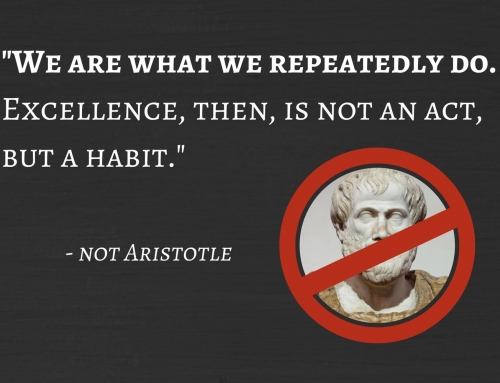

Leave A Comment